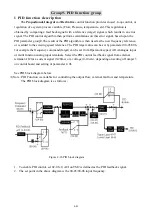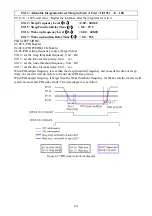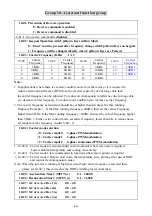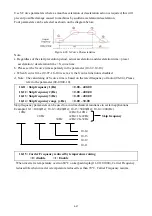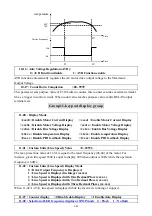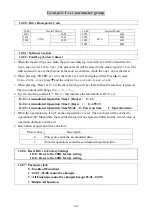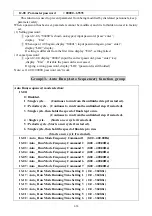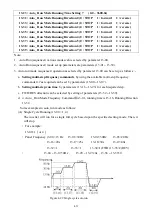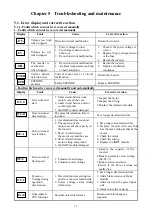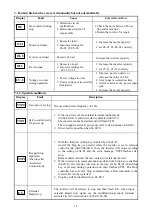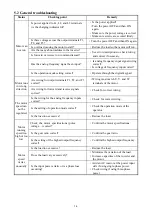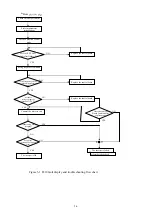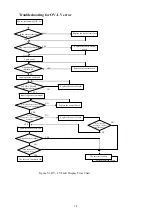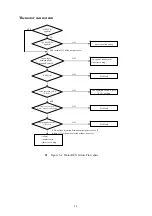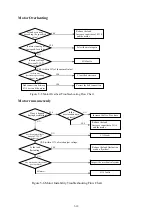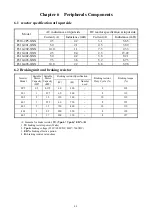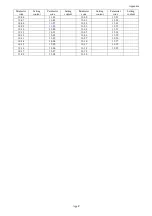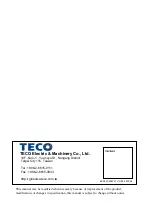
5-4
5.2 General troubleshooting
Status Checking
point
Remedy
Is power applied to L1, L2, and L3 terminals
(is the charging indicator lit)?
‧
Is the power applied?
‧
Turn the power OFF and then ON
again.
‧
Make sure the power voltage is correct.
‧
Make sure screws are secured firmly.
Is there voltage across the output terminals T1,
T2, and T3?
‧
Turn the power OFF and then ON again.
Is overload causing the motor to stall?
‧
Reduce the load so the motor will run.
Are there any abnormalities in the inverter?
Is forward or reverse run command issued?
‧
See error descriptions to check wiring
and correct if necessary.
Has the analog frequency signal been input?
‧
Is analog frequency input signal wiring
correct?
‧
Is voltage of frequency input correct?
Motor can
not run
Is the operation mode setting correct?
‧
Operate through the digital keypad .
Are wiring for output terminals T1, T2, and T3
correct?
‧
Wiring must match U, V, and W
terminals of the motor.
Motor runs
in wrong
direction
Are wiring for forward and reverse signals
correct?
‧
Check for correct wiring.
Is the wiring for the analog frequency inputs
correct?
‧
Check for correct wiring.
Is the setting of operation mode correct?
‧
Check the operation mode of the
operator.
The motor
speed can
not be
regulated.
Is the load too excessive?
‧
Reduce the load.
Check the motor specifications (poles,
voltage…) correct?
‧
Confirm the motor specifications.
Is the gear ratio correct?
‧
Confirm the gear ratio.
Motor
running
speed too
high or too
low
Is the setting of the highest output frequency
correct?
‧
Confirm the highest output frequency.
Is the load too excessive?
‧
Reduce the load.
Does the load vary excessively?
‧
Minimize the variation of the load.
‧
Increase capacities of the inverter and
the motor.
Motor
speed
varies
unusually
Is the input power erratic or is a phase loss
occurring?
‧
Add an AC reactor at the power input
side if using single-phase power.
‧
Check wiring if using three-phase
power.

